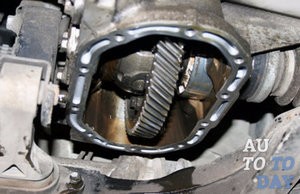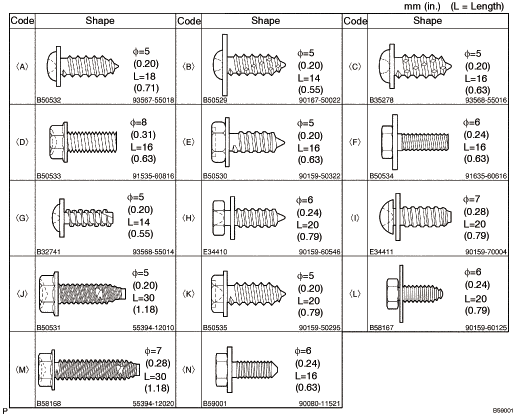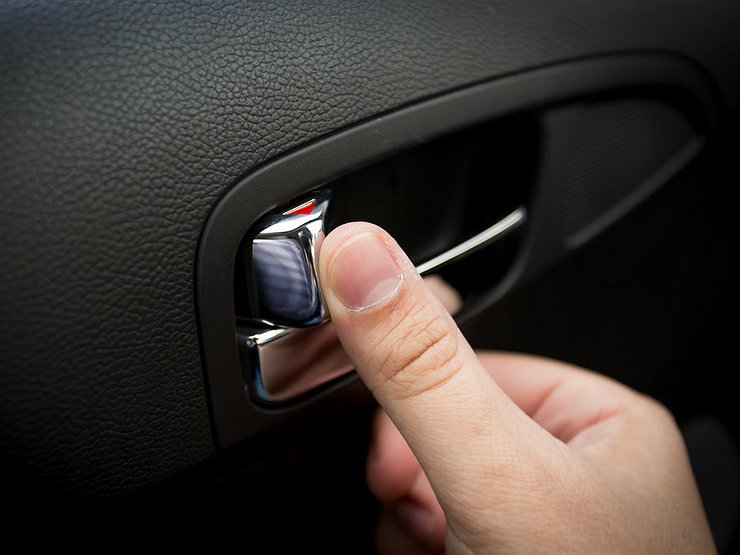
How to replace the differential gasket
Content
Differential gaskets seal the differential housing and protect the rear gears and axles from the weather.
The rear differential is one of the most physically imposing components of any car, truck or SUV. Although it is designed to last the lifetime of the vehicle, this assembly tends to wear a lot and is prone to the common wear problems that most mechanical components suffer from. The housing is made of high strength steel and protects the rear gears and axles from the weather. However, in most cases, the damaged part of the rear differential is the differential gasket.
The differential gasket is the gasket that seals the differential housing. It is usually made of cork, rubber, or oil-resistant silicone that seals the two-piece differential housing. This gasket is designed to keep grease and oil in the rear of the case, and to keep dirt, debris, or other harmful particles from entering the rear differential. Rear end oil and lubrication is necessary to properly lubricate the ring gear and pinion that transmit power to the drive axles.
When this gasket fails, lubricants leak out the back of the case, which can cause these expensive components to wear out or fail completely.
The differential gasket wears out or breaks very rarely. In fact, some differential gaskets made in the 1950s and 1960s are still on the original cars today. However, if a gasket problem does occur, as with any other mechanical defect, it will display several general warning signs or symptoms that should alert the vehicle owner to the presence of a problem.
Some of the common warning signs of a damaged or broken differential gasket include:
Traces of rear oil or grease on differential case: Most differentials are round, while some may be square or octagonal. Regardless of their size, the one thing that all differentials have in common is that the gasket covers the entire circumference. When one part of the gasket fails due to age or exposure to the elements, the oil inside the differential will leak out and usually coat that part of the differential. Over time, the gasket will continue to fail in several places, or the oil will leak out and cover the entire diff housing.
Puddles or small drops of rear end grease on the ground: If the gasket leak is significant, oil will leak out of the differential and may drip onto the ground. In most cases, the rear differential will drip into the center of the car; where housing is usually located. This oil will be very dark and very thick to the touch.
Howling sounds come from the back of the car: When oil and lubricants leak from the differential gaskets, this can create a harmonious "howling" or "whining" sound. This is a sign of a serious problem with the rear reduction gears and can lead to component failure. Basically, the howling sound is caused by metal rubbing against metal. Because the oil is leaking out of the housing, it cannot lubricate these expensive components.
Any of these warning signs or symptoms above should alert any vehicle owner to a rear differential problem. In most cases, the differential can be taken apart and the gasket replaced without removing the rear of the vehicle. If the damage inside the differential is significant enough, the gears or components inside the rear may need to be replaced.
For the purposes of this article, we will focus on the best recommended methods for removing the old differential gasket, cleaning the housing, and installing a new gasket on the differential. It is strongly recommended to inspect the ring gears and gears, as well as the axles inside the housing for damage; especially if the leak was significant; before installing a new gasket. For detailed instructions on how to complete this process, please refer to your vehicle's service manual or contact a rear reduction gear specialist who can assist you with this task.
Part 1 of 3: What causes differential gasket failure
In most cases, aging, wear, or overexposure to harsh weather and components will cause the differential gasket to rupture or leak. However, in some very rare cases, excess pressure inside the rear case can also cause the gasket to be squeezed out, which can also lead to a leak. In most cases, a slowly leaking differential will not cause driving problems. However, since oil cannot be replenished without physically adding it to the differential; this can eventually lead to severe damage to internal components.
Some of the most common problems that can be caused by an oil leak at the rear can include damage to the ring gear and pinion or axles. If a broken seal is not replaced quickly, excess heat will build up inside the case, eventually causing these parts to break. While many people don't see this as a big deal, replacing rear gears and axles can be very expensive.
- A warning: The work of changing the differential gasket is very easy to do, but it must be done on the same day; as leaving the differential housing open and exposing the internal gears to the elements can cause the seals inside the housing to dry out. Make sure you plan to complete this job without service delays to reduce damage to internal components.
Part 2 of 3: Preparing the Vehicle for a Differential Gasket Replacement
According to most service manuals, the job of replacing the differential gasket should take 3 to 5 hours. Most of this time will be spent removing and preparing the differential housing for the new gasket. To perform this task, raise the rear of the vehicle and jack it up or raise the vehicle using a hydraulic lift. In most cases, you won't have to remove the center differential from the car to do the job; however, you should always refer to your vehicle's service manual for specific instructions recommended by your manufacturer.
In most cases, the materials you will need to successfully remove the differential housing, remove the old gasket, and install the new one include the following:
Necessary materials
- Brake cleaner (1)
- Clean shop rag
- Flat and Phillips screwdrivers
- Socket set and ratchet
- Gasket and silicone gasket replacement
- Rear oil change
- Scraper for plastic gasket
- Drip tray
- Silicone RTV (if you don't have a replacement gasket)
- Wrench
- Limited slip additive (if you have a limited slip differential)
After gathering all of these materials and reading the instructions in your service manual, you should be ready to get the job done. There are many rear diffs that are very difficult to find replacement gaskets for. If this applies to your individual application, there is a way to make your own gasket from RTV silicone approved for use with rear diffs. Make sure you only use silicone approved for use with rear end oils, as many silicones actually burn out when activated with rear end gear oil.
Part 3 of 3: Differential Gasket Replacement
According to most manufacturers, this job should be done within a few hours, especially if you've got all the materials and a spare gasket. While this job does not require you to disconnect the battery cables, it is always a good idea to complete this step before working on the vehicle.
Step 1: Jack up the car: In most cases, you will be replacing the rear diff gasket as the front is the transfer case and includes other steps. Place jack stands under the rear axles at the rear of the crankcase and jack up the vehicle so you have enough room to work under the vehicle with clearance.
Step 2: Place a pan under the differential: In this job, you will need to drain excess gear oil from the center differential. Place an appropriately sized sump or bucket under the entire differential and outer case to collect fluid. When you remove the cap, as described below, the oil will spill out in several directions, so you need to collect all of this liquid.
Step 3: Locate the filler plug: Before removing anything, you need to locate the fill plug on the diff housing and make sure you have the right tools to remove it; and add new fluid when the job is done. In most cases, this plug can be removed with a ½" extension. However, some differentials require a special tool. Double check this step before doing replacement work. If you need to purchase a special tool, do so before removing the cover.
Step 4: Remove the fill plug: Once you've determined that you can complete this task, remove the fill plug and inspect the inside of the plug. In most cases, this plug is magnetized, which attracts metal chips to the plug. Rear gears wear out over time, so it's important to inspect the spark plug to make sure there's a lot of metal attached to it. Again, this is a proactive procedure to determine if you should take the rear gears to a mechanic to inspect or if they should be replaced.
Remove the plug and set it aside until you are ready to add new fluid.
Step 5: Remove the differential bolts except for the top bolt: Using a socket and ratchet or socket wrench, remove the bolts on the differential plate, starting at the top left and working from left to right in a downward direction. However, DO NOT remove the center top bolt as this will help hold the fluid contained in it as it starts to drain.
Once all the bolts have been removed, start loosening the top center bolt. Do not unscrew the bolt completely; in fact, leave it half inserted.
Step 6: Gently pry off the cover with a flathead screwdriver: After the bolts are removed, you will need to remove the cover. Be very careful when doing this with a screwdriver so as not to scratch the inside of the differential housing.
Once the cover is loose, let the rear end fluid drain out of the diff until it drips slowly. After the number of drops has reduced to one every few seconds, unscrew the top bolt and then remove the differential cover from the differential housing.
Step 7: Cleaning the Differential Cover: Cleaning the differential cover consists of two parts. The first part involves removing excess oil from the cap. To do this, use a can of brake fluid and plenty of rags or disposable towels. You need to make sure that there are no oils on the entire lid.
The second part involves scraping off all of the old gasket material from the flat edge of the differential cover. To complete this part of the cleaning, it is best to use a plastic scraper to avoid scratching the lid.
Once the cover is completely clean, inspect the flat surface of the differential cover for pitting, damage, or bent metal. You want it to be 100% flat and clean. If it is damaged at all, replace it with a new cap.
Step 8: Clean the Differential Housing: As with the cover, completely clean the outside of the differential case. However, instead of spraying brake cleaner on the body, spray it on a rag and wipe the body. You don't want to spray brake cleaner on your gears (even if you saw it in a YouTube video).
Also, use a plastic scraper as shown in the image above to remove any debris from the flat surface of the diff housing.
Step 9: Prepare to Install the New Gasket: There are two ways to complete this step. First, if you have a spare gasket, you should ALWAYS use it for this project. However, some replacement pads are hard to find; which would require you to fabricate a new RTV silicone gasket. As we stated above in Part 2, use ONLY RTV silicone specifically approved for gear oils.
If you need to make a new silicone gasket, follow these instructions to complete the task:
- Use a new tube of RTV Silicone.
- Pry open the seal and cut the end of the tubing so that approximately ¼ inch of silicone comes out of the tubing.
- Apply silicone with one solid bead, approximately the same size and proportions as in the image above. You will need to apply a bead to the center of the lid and then under each hole. Make sure the bead is made in one successive application.
Let the freshly applied silicone gasket sit for about 15 minutes before installing it on the differential case.
Step 10: Installing the Differential Cover: If you are installing a factory gasketed cap, this job is fairly easy. You'll want to apply the gasket to the cover, then insert the top and bottom bolts through the gasket and cover. Once these two bolts have passed through the cover and gasket, hand-tighten the top and bottom bolts. Once these two bolts are in place, insert all other bolts and hand-tighten slowly until tight.
To tighten the bolts, refer to the service manual for the exact recommended diagram. In most cases, using a star pattern is best for rear differentials.
If you are using a new silicone gasket, the procedure is identical. Start with the top and bottom bolts, then tighten until the silicone gasket begins to press into the surface. You must insert the bolts and slowly tighten them evenly to distribute the air bubbles in the silicone gasket. DO NOT FULLY TIGHTEN THEM IF RTV silicone gasket is used.
Step 11: Tighten the bolts to 5 lb/lb or until the RTV starts to push through: If you are using a silicone gasket made from RTV silicone, you need to tighten the star bolts until you start to see the gasket material being forced through the differential seal. The roller should be smooth and uniform throughout the body.
Once you have reached this phase, let the case sit for at least an hour to dry and secure the silicone gasket. After one hour, tighten all bolts in a star pattern according to the manufacturer's recommendations.
Step 12: Fill differential with new gear oil: Using the recommended gear oil for your vehicle and the rear oil pump, add the recommended amount of fluid. This is usually about 3 liters of fluid or until you start to see the fluid slowly pour out of the filler hole. When the fluid is full, wipe off excess gear oil with a clean rag and tighten the fill plug to the recommended torque.
Step 13: Lower the car off the jack and remove all materials from under the car. Once you complete this task, the rear differential gasket repair is complete. If you have gone through the steps in this article and are unsure about completing this project, or if you need an additional team of professionals to help solve the problem, contact AvtoTachki and one of our local ASE certified mechanics will be happy to help you replace the differential . pad.

